Alberta Beginners Fishing Guide
I love fishing. I was introduced to fishing before I could even walk. It’s a part of my life, part of who I am, and fishing in Alberta is such a treat! The pristine mountain reservoirs, lakes, rivers, inlets, ponds and streams are as challenging as they are beautiful. The expansive prairie lakes are full of Trout and Pike just waiting for a fight. Fishing is an exciting hobby and it takes skill just like anything else, and the more you do it the more you’ll love it. Hopefully! If you’re new to fishing, or fishing in Alberta, this guide will answer any questions you may have about getting started and getting out there. Fishing is great hobby for people of any age, perhaps just excluding infants and centurions. You get exercise, sunshine, fresh air, plus there’s fishing!
This guide includes a list of what you’ll need to get started fishing in Alberta, including adequate licensing, fishing rod, reel and tackle suggestions, plus some suggestions on places to go fishing for adults and for children. This guide does not cover how many fish you can catch at any specific lake or river. The Alberta Fishing Regulations change each year, and you should always be checking the official regulations every time you head out fishing anyway.
You probably know someone already obsessed with fishing, send them a DM! I bet they’d be happy to show you the ropes, answer any questions, or take you out on the lake somewhere.

Getting Started
Fishing is a great hobby for all ages, so long as you can cast a rod. Super relaxing, often challenging, very rewarding, and it doesn’t cost much money to get started. The fishing season in Alberta runs from April 1st until March 31st each year, and you can buy a license at any time during the season. Once you’re licensed, you’ll need some gear and a few supplies. See the list below for the basic info and suggestions on how you can begin your new career as a world class angler! 🎣
Estimated cost to get started fishing in Alberta: $60 – $100
Buy A WIN Card
A WIN (Wildlife Identification Number) card is your ‘account’ with the Alberta Government which you purchase and apply seasonal licenses to. The term ‘WIN card’ refers to a physical plastic card they used mail out, which were only good for 5 years before having to be renewed. In 2020 the Alberta Government moved to an online system, so WIN cards are no longer mailed out. The cost is $8 and you no longer need to renew it. The $8 is now a one-time fee. If you prefer, you can request a physical card be mailed out at a cost of a few dollars.
- Buy from AlbertaRELM.com (create an account)
You can also buy a WIN card from a retailer, listed below.
Buy A Fishing License
Once you have your WIN card, you can purchase a fishing license! This is so exciting. You can buy a fishing license online from AlbertaRELM.com, or in-person at one of the many license issuer locations throughout the province. Most people buy a fishing licence from Canadian Tire. If you’re interested in catching and keeping Walleye, you’ll need to apply for a Special Walleye License draw.
If you’re outside of Calgary/Edmonton, see AlbertaRELMs list of license issuers list for all of Alberta. Here’s a list of retailers in Calgary and Edmonton where you can buy a fishing license in person
Calgary
- Cabelas Location: 851 64 Ave NE
- Calgary Archery Centre Location: 4855 47 St SE
- Calgary Shooting Centre Location: 7130 Fisher Rd SE Bay 4
- Canadian Tire Location: Multiple locations
- Fish Tales Fly Shop Location: 12100 Macleod Trail SE #626
- Jim-Bows Archery Location: 620 46 Ave NE #102
- Out Fly Fishing Outfitters Fly Shop Location: #109, 9919 Fairmount Dr SE
- The Fishin’ Hole Location: 3221 Sunridge Way NE #707
- The Shooting Edge Location: 510 77 Ave SE
Edmonton
- Cabelas Location: 15320 37 St NW | 6150 Currents Dr NW
- Canadian Tire Location: Multiple
- Jim-Bows Archery Location: 13955 156 St NW
- TEMPO, Tay’s Food Store Location: 10415 158 Ave NW
- The Fishin’ Hole Location: 11283 170 St NW | 9078 51 Ave NW
Fishing License Cost
- Age 65 or older: No license required
- Age 16 or younger: No license required
Alberta Resident |
|
| Age: 16 - 64 | $28.00 |
Canadian Resident From Outside Alberta |
|
| Annual | $60.00 |
| Limited (7-day) | $41.00 |
| Limited (1-day) | $25.00 |
Non-Resident from outside Canada | |
| Age: 16 - 64 | $85.00 |
| Limited (7-day) | $55.00 |
| Limited (1-day) | $26.63 |
Where Does The Money From Fishing Licenses Go?
The money generated from WIN cards and fishing licenses goes toward all of the Alberta Conservative Association programs and services, such as raising fish for stocking ponds and lakes, lake aeration, monitoring and enhancing of wild life, securing and protecting habitats, sustaining our forests, fisheries and the environment, and so much more! They have an entire breakdown of where the money goes on their website.
Why Stock Fish?
Stocked ponds are usually more accessible to the public, making them some of the most fished waterbodies per surface area in the province. Every year, ACA stocks dozens of waterbodies with over 100,000 fish, under the Fish Stocking Program. Beyond their popularity, these stocked ponds also attract bird and wildlife species—making them a perfect hangout for nature enthusiasts, picnickers, and families.
More Links
- Latest Alberta fish stocking report
- Alberta Wildlife Status Reports
- Watercraft Inspections
- Report A Poacher Online
- Alberta Fisheries Management
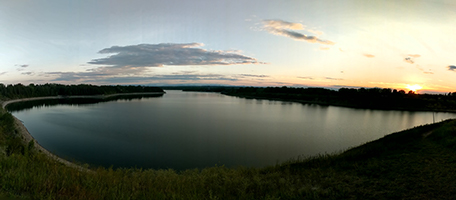
Buy Fishing Gear
Obviously you’ll need to pick up some fishing gear! There are generally two styles of fishing in Alberta, rod & reel casting, and fly fishing. There’s also ice fishing, ice fishing traps, spear fishing, trolling behind a boat and other methods, but in this guide we’re just going to cover the main two. Fishing gear comes in a huge variety of brands, quality and prices. Generally though the more you pay, the higher the quality of the product will be, which can be important if you intend to fish a lot and put a lot of wear and tear on the equipment. A plastic component vs one made with metal can make a huge difference in adverse weather conditions.
Keep in mind: You can catch just as many fish with cheap gear as you can with expensive gear! A little skill and a little luck you can go a long way.
Where To Shop For Gear
Your best bet is going to an actual fishing store and speaking with an employee and telling them what you’re looking to buy. They’re absolutely loaded with information and fishing is their passion (you can’t really work in a fishing store if it isn’t) and they can hook you up with everything you need, based on your goals. They also have all sorts of tips on local bodies of water, utilize them!
Canadian Tire has a great selection of everything you could need or want, but you’ll need to know what you’re going for. I’ve found that their are not knowledgeable about fishing gear. No big deal, they’re a big department store. The same goes with Walmart, although Walmarts fishing gear selection is much smaller than Canadian Tire. Canadian Tire also sells live/frozen bait, whereas Walmart does not.
Spin Casting Rod + Reel
You don’t need anything super expensive or fancy with a classic rod and reel, but it’s not something you want to cheap out on either. Expect to pay around $30 – $50 for a decent rod and reel combo, or more if you can afford it. Some rod and reel combos also come with a beginner tackle kit, which usually has a few lures, leaders, joiners, split shot and hooks. You can also buy your rod and reel separately if you prefer as all rods and reels are interchangeable. The benefits of buying a higher end reel include better lubrication on the inside gears, they’re made with stronger and more durable components, designed to fit your hands more comfortably and they overall just feel better.
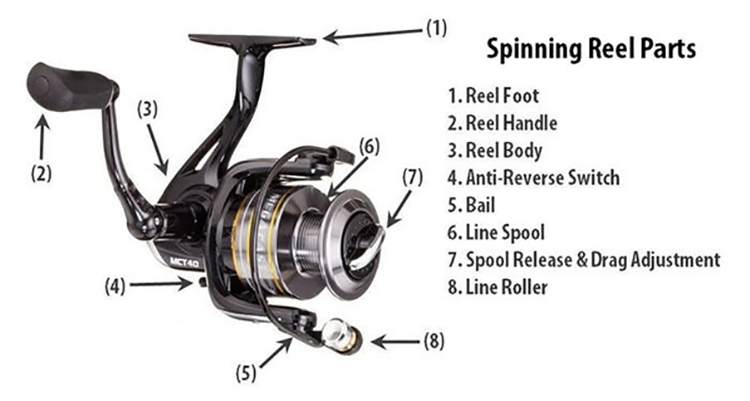
The more you spend, the higher the quality of rod and reel you’ll get and fishing gear really is ‘you get what you pay for’. An expensive rod will have sturdy components made of metal or titanium that will outlast plastic components every single time, and should last for years of regular use.
Wakeman Strike Series Spinning Rod and Reel Combo-Blackout
Price: $62.83
1 used & new available from $62.83
Fly Fishing Rod + Reel
Even though they look similar, fly fishing rods are not quite the same as a casting rod and reel, you won’t find them for dirt cheap in the back of a dollar store somewhere. Fly fishing rods are larger, require more finesse and control to use successfully, so you don’t generally find low quality fly fishing gear. Expect to pay around $50 – $100 for a beginner fly fishing rod and reel combo. I’d recommend visiting Canadian Tire for your first fly rod as you can get something for $50-$60 to get you started, or order something from Amazon (with good reviews/photos). If you’re feeling like you need more support, drop by a local fishing store like Fishing Hole or Bass Pro and get some in-person advice from an expert.
Tools And Other Items You’ll Want
In addition to a fishing rod and reel, you’ll need some more things like fishing line, a tackle box, leaders, weights, split shot sinkers, needle nose plyers, lures and other terminal tackle (Terminal tackle refers to things that are attached to the end of a fishing line). These things are relatively inexpensive but will need to be replaced over time as you snag lines and lose things. You can never be too prepared! Better to have something and not need it, than need it and not have it.
A Tackle Box
You’ll want to get a tackle box to keep all of your tackle in, plus other tools or supplies. I’d suggest picking up something with a bit of room to it, but not something so large that it’s difficult to carry. This tackle box on Amazon is built into a duffle bag, making it super easy to carry. You want enough room to keep your tackle organized and easy to access, if you need to grab plyers one-handed.
Expect to pay around $25 – $50, or more
Fishing Line
There are many different kinds of fishing line, but to get you started I’d recommend a basic fluorocarbon, or monofilament 6lb to 10lb. They aren’t very pricey and come in various strengths and colours for different types of fishing environments. A thicker line will be easier to be seen by fish, spooking them, so try to use the lightest line you can for the kinds of fish you’re going for. Don’t use a 10lb line for a lake that only has 1lb fish. Also, a braided line (pictured) will last you a long time as they’re very strong and durable, great for when your line runs up on rocks or weeds.
Note: fishing line should be replaced if it starts tangling easy, snapping, or has been sitting in the sun for a long time. Here’s a YouTube video on how to spool a spin casting rod.
Expect to pay around $5 – $35
Barrel Swivels With Interlock Snap
Barrel swivels are tied to the end of fishing line to make it easier to switch lures, but the weight of the swivel itself can be of concern to some anglers due to causing some lures not to function exactly as they were meant to, and with swivels simply breaking and you losing a fish. I personally prefer do use barrel swivels in most cases as I like to switch lures up often, but I too have lost fish to them breaking. Make sure to discard a barrel swivel if it seems like it’s falling apart, bent, or rusted. Barrel swivels come in various sizes; the bigger they are, the stronger they are, but also more easily seen by fish.
Expect to pay around 10 cents – 20 cents each
Split Shot Weights
You attach split shot weights to your fishing line to make it heavier, for sinking bait, holding things like bobbers in-place, or just making it easier to when casting light lures. Tip: so it doesn’t slip, wrap the fishing line around it twice, before pinching it off. Also, it’s a good idea to get a plastic case to keep the split shot in.
Expect to pay $2 – $15
Wire Leaders
Some fish have sharp little teeth (Northern Pike, Walleye, etc) that can easily cut through normal fishing line, so when fishing in waters they live in you’ll want to use a wire leader at the end of your line. Leaders come in various sizes, thickness and colours but they all do the same thing, and they have a swivel at the end so you can easily switch lures. Try to use the thinnest leader you can as fish spook easily and will avoid your bait/lure if they suspect even the slightest bit of danger. Leaders are generally pretty inexpensive
Expect to pay around 50 cents each
Hook Removal Tool
Ever catch a fish that swallowed your hook? Northern Pike have sharp teeth and you don’t want to put your fingers anywhere near them. A good hook removal tool will make it super easy to get the hook out while not harming the fish. I’d recommend carrying one of these tools, and a regular pair of needle nose plyers (they’re smaller, fit into your pocket easier, can come in handy).
Expect to pay around $5 – $15
A Fishing Net
Fishing nets make it easier and safer to bring your catch out of the water, and they’re especially useful when fishing from a boat. They aren’t a required item but they’re a very nice-to-have piece of fishing equipment. It’s important to be as gentle as possible when handling fish to keep their slime coat intact, which protects them from bacteria and infections. Rubber netting is preferred over nylon as it’s a little more forgiving and it won’t harm the slime coat.
Expect to pay around $15 – $100
Bobbers And Floats
Bobbers and floats are only used when casting with a spin rod, used for dangling bait just under the waters surface, or to slowly pull flies over the waters surface. I find they work best if you attach a split shot weight to both sides of the bobber on your line. Some bobbers will also take on water, which makes them easier to cast further. There is a huge variety of bobbers and floats out there but I prefer using the type in the photo.
Expect to pay $1 or less each
Catch Fish Using Flies & Bobbers
Fishing with a bobber and fly is really easy to do and can be quite effective at catching fish, though it’s not as accurate as fly fishing. The idea is you attach a bobber towards the end of your line, then attach a fly leader (very thin and very light line) to the that, with a fly on the end. Cast your bobber and fly out then slowly reel it back in. The fly will trail behind the bobber, causing a slight ripple and disturbance in the water, enough to hopefully catch the attention of a fish. Flies are often used for Trout but you can also catch Pike with them too!
Lures
Lures come in all sorts of shapes, sizes, designs and styles. Jigs, spoons, plugs, spinnerbait, soft plastics, hard plastics, flies, buzzbait are some of the most common kinds of lures, and there are an assortment of flies for every occasion. My favourite lure is the classic Five of Diamonds spoon. I’ve had success with it on Trout, Pike, and even Whitefish, and it has a long history of being a preferred lure by anglers. As a beginner it would be in your best interest to have an assortment of lures and flies in your tackle box to make use of different things for different situations. A company called Rapala is a world leader in fishing lures (and other gear), they make some of the best lures you can find, but they do cost more. It really stings when you snag and lose a $10 lure.
Expect to pay $1 – $15 per lure
Fishing Knots
Without a good fishing knot, you’re going to lose whatever is on the end of your line, especially if you hook a big fish. It’s super important to learn how to tie a proper knot (and there are many to choose from) before you even think about hitting the water. Take some time to practice some fishing knots at home using rope, there many excellent YouTube tutorials.
I personally use and recommend the Palomar Knot. It’s easy to tie, and very strong. Make sure to wet the line a little bit before tightening for maximum strength. The improved clinch knot is pretty good too.
Choosing A Place To Fish
Where you go fishing usually just depends on what kind of fish you’re after and how far you need to go to get them. Thankfully there are hundreds of places in Alberta to fish, some harder to get to than others, but lots to choose from. The Alberta Government also regularly stocks lakes and reservoirs around the province with game fish for anglers to catch, mainly in bodies of water that aren’t able to sustain fish throughout the winter. If you live in Calgary or Edmonton, there’s several places to fish without having to leave the city. The Alberta Conservative Association has an interactive fish stocking tool you can use to find places to fish.
Personally I love combining fishing with camping. I don’t really enjoy camping if there’s no fishing component.
Finding A Place To Fish
I look at Google Maps for rivers, lakes or reservoirs in the areas I’m interested in going to, like if I’m going camping somewhere, or a friend wants to go fishing “within 2 hours” of my city. Once I find a body of water, I search for it on AlbertaFishingGuide.com to see the regulations and other info. For example: Spray Lakes. If that website doesn’t list it (rare, but it happens), I check the Alberta Fishing Regulations. From there I poke around Google for any forum posts or other information that’ll help me catch fish once I get there. Don’t forget to check YouTube! For example: Fishing Spray Lakes. iFishAlberta.ca is also a good resource to check up on (they also have an app).
Fishing Spot Suggestions
In/Around Calgary
- The Glenmore Reservoir – easily accessible, has Trout and Pike
- The Bow River – easily accessible, world famous for Trout (catch & release only)
- Eagle Lake – near Strathmore, great for Pike, boat recommended or ice fishing
- Spray Lakes Reservoir – near Canmore in the mountains, open all year, big Lake Trout
- Winchell Lake – near Cochrane, stocked with Trout
In/Around Edmonton
- North Saskatchewan River – easily accessible, great for Pike, Burbot, Goldeye, and it has Lake Sturgeon!
- Big Lake – easily accessible, great for kids and families
- Wabamun Lake – 1 hour west of Edmonton, great place for Pike (catch & release only)
- Muir Lake – 30 minute drive west of Edmonton, great place for Trout
- Nakamun Lake – 1 hour North West of Edmonton, great for Pike and Perch
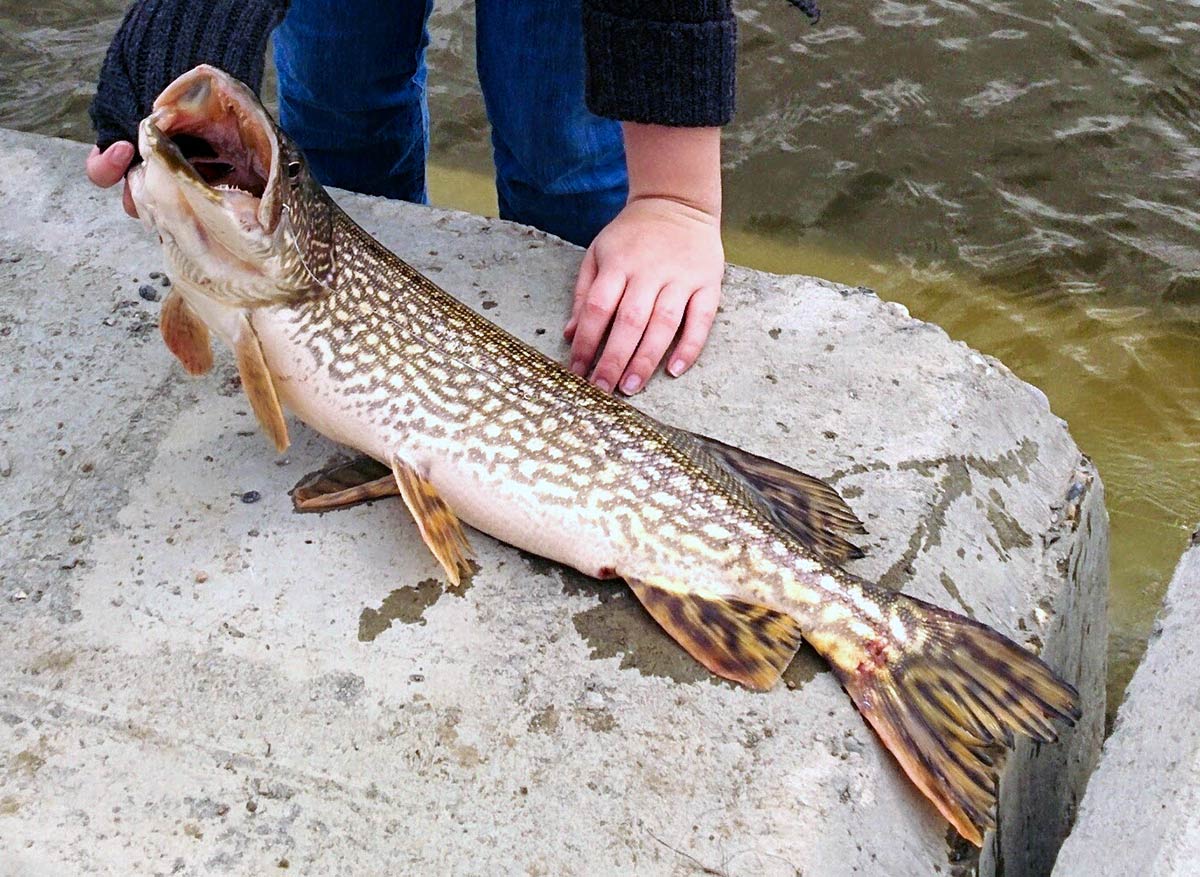
How To Cast A Fishing Rod
Okay, you’ve got all the gear, you’re licensed, you’ve picked a fish you wanna try and catch, driven there and you’re standing beside the lake — now what? Well, you fish!
Spin Casting
The spin casting method of fishing might look complicated but it’s super simple and absolutely anyone can do it! The weight is all in the lure, you just use your finger to hold the line, flip the bail arm over, cast, let go of the line at the right time and you’re in business. It can be done left or right handed (you can swap the reel arm to either side!) and the more you do it, the better you’ll get at it. Make sure to check YouTube for how to cast videos; you’ll find lots!
- Grip the rod firmly in your dominant hand, putting the reel arm between your fingers
- Using the same hand, hold the fishing line with your index finger and flip the bail arm over
- Drop your lure at least 1 – 2 feet from the end of the rod tip before casting, this will help with momentum
- Swing your arm to cast while simultaneously releasing the line from your grip
- If you release too soon, the lure will shoot up high into the air
- If you release too late, the lure will quickly land at your feet
- Flip the bail arm back over and begin to retrieve
Fly Fishing
With a fly rod, instead of regular fishing line, you use what’s called fly line. Fly line is made of rubber and is much thicker than normal fishing line, which means it’s also heavier. It’s the weight of this fly line that makes fly fishing possible. You swing the fly rod back and forth, slowly releasing more slack on the fly line as the momentum of your swings increases, then at the right moment, as you suddenly stop swinging, the momentum you’ve built up with the fly line will project the fly attached to the end, right where you want it to! It sounds more complicated than it is. There are many, many, many fly fishing tutorials on YouTube!
Rather than list the steps to casting, check out the below video – I feel it explains it better than I can through text.
Tips For Fishing With Kids
Fishing with kids can be really fun, challenging and rewarding. You’ll get to live vicariously through them as they learn the ropes and what it’s like to catch their own fish (hopefully!), clearing the way for them to develop a lifelong love of fishing. Something to remember: patience! They might be super eager to reel in a fish and they may not do everything you tell them, so do your best and give them lots of time to learn.
- Cast the line out yourself then let them reel it in
- If you hook a fish while fishing, hand them the rod to reel it in
- Let them decide on which lures to use
- If you reel in a fish, let them safely release it back into the water
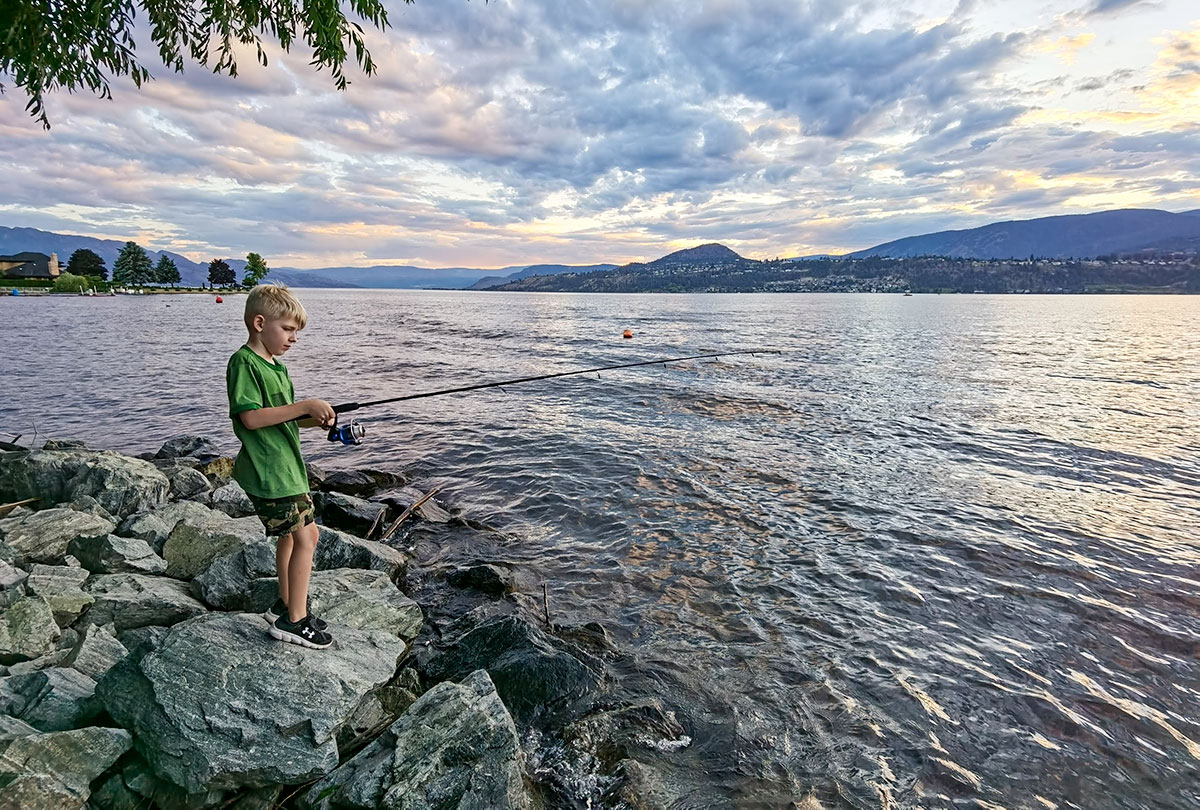
Something you can do at home is to take the kids into the yard or some public space with lots of room and simply practice casting. If you set yourself up for success at home, you’ll have a much better time once you’re at the lake.
Where To Take Kids Fishing Near Calgary
Kids love to catch fish, whether it’s Trout or Pike or Suckerfish, they don’t care they just want to get in there and catch them. Taking them to stocked bodies of water often is a good idea because it’ll make catching them a bit easier, depending on how long ago it was last stocked. There are no stocked ponds or lakes within the city limits of Calgary or Edmonton. Check the Alberta Stocking Map to see which ponds and lakes are stocked. Review the Fish Stocking List to see when they were last stocked.
Suggestions
- Chain Lakes Reservoir – 1.2hrs south of Calgary, open all year, lots of easy access to water, can swing by the Nanton Candy Store
- Dickson Trout Pond – 1.3hrs north of Calgary, stocked regularly throughout the year, easy to access
- Dewitt’s Pond – 30mins from Calgary, stocked, easy to access, great for families
- Glenmore Reservoir – easily accessible in the city, has plenty of safe shoreline to cast from, great for families
- Grotto Mountain Pond – 1hr from Calgary on the TransCanada, stocked regularly, great place for families
- Sibbald Meadows Pond & Sibbald Lake – 1hr from Calgary
- Both stocked, very close to each other, plus Sibbald Campground is right there, great for families
- Sylvan Lake – 1.3hrs from Calgary, best fished from a boat but not necessary, kids will also love the beach
Check out my guide to fishing around Calgary for some other nearby suggestions.
Different Types Of Lures
The goal of fishing is to trick fish into eating your bait or lure, either by making it think that it’s food, or making it annoyed so it strikes out in anger. It’s generally best to try to mimic the food a fish might naturally find in their environment, such as flies on the surface of the water, fish eggs in calm waters, small fish swimming quickly and erratically, maggots, worms, or other things like that which they might naturally find. Synthetic bait and lures exist in all shapes and sizes, so get a big tackle box. You’ll enjoy buying and trying different styles and colours as you figure out what works best for you. Warning: it can be rather addicting.
Jigs
Jigs can be either hard, or soft, most commonly made of rubber, silicone or metal but they all do the same thing. They’re meant to be ”jigged‘ up and down in the water, usually near the bottom. Jigs typically have a weighted head with a hook, which you can attach soft bodies to. Jigs often resemble things like leeches or worms or other creepy crawlers fish love to eat.
- Cast the jig out, letting it sink towards the bottom
- Lift your rod tip up, reel in a bit, stop – letting the jig sink back down
- Do this over and over, try to mimic something trying to swim up and out of the water
- If you feel tension or tugging on your line, pull back to set the hook
Spoons
My main lure of choice is a spoon! Spoons are lures that are spoon shaped, offering a unique spinning method when reeled in at the appropriate speed, fish love chasing after them. Which pattern on the spoon is the best? That is a great question and one you should ask every angler. I specifically prefer using a five of diamonds as I find it seems to catch more fish, for whatever reason.
- Cast the spoon out, letting it sink a little but not too far, you don’t want to snag
- Point the rod rip down towards the water, begin reeling in and moving your rod back and forth
- If you reel in too fast your spoon will skip on the waters surface
- If you reel in too slow your spoon will drag on the bottom, leading to snags
- If you feel tension or tugging on your line, pull back to set the hook
Hard Bait Lures
These kinds of lures include crankbait, jerkbait, plugs and others. They tend to look like little fish and often have little plastic ‘bills’ on the front which cause them to swim in an erratic side to side motion as you reel them in, though they don’t always have a bill. They generally swim just below the surface to down a couple feet, depending how heavy they are and of what design. Some hard bait floats on the surface too, called topwater lures, which are great for Trout and Pike. It all depends on which fish you’re after to what kind of presentation you offer them. Spend some time testing what works for you.
Crankbait having shorter and fatter bodies with 2x treble hooks and jerkbait being longer and more slender, with 3x treble hooks.
- Hard bait lures are great for trolling behind a boat
- You can remove some of the treble hooks to make it easier on the fish
- There is a huge selection of colours and styles to choose from
- Great for almost all kinds of fish
Rapala Fishing Lures
A company called Rapala produces some of the best lures in the world for catching Trout and although they’re a little more pricey than generic tackle, you get what you pay for. Go into a fishing store and ask the staff about them, you’ll see!
Spinners
Spinners are designed to spin as you reel them in, taking on the appearance of a bug or underwater critter fluttering through the water. I’ve found that Trout and Pike both love chasing spinners, especially if you can cast into a nice current of water. Spinners come in all colours and an unlimited number of styles, with the two being Mepps and Rooster Tails. Panther Martin makes some good spinners.
- Cast the spinner out, let it sink a little bit
- Lower the rod rip down towards the water, begin reeling in and moving your rod back and forth slowly
- Reel in fast enough to make it spin
- If you don’t reel in fast enough it won’t spin and won’t be effect, plus you could snag bottom
- If you feel tension or tugging on your line, pull back to set the hook
Flies
Flies is a general term that covers a wide assortment of synthetic lures that resemble insects, bugs, mayflies, caddisflies, stoneflies and other designs and styles that look like food for a hungry fish. Some flies rest on the surface of the water while some are designed to sink just under the surface, where fish do most of their feeding. Dry fly = floats. Wet fly = sinks.

Dry Flies
Resembling a small fly that has fallen or landed on the surface, dry flies float on the water attracting fish underneath to swim up and eat them up. Because dry flies remain on the surface it’s much easier to tell when a fish is going after them – when you see the fish jump out of the water, it’s show time.
Nymph
The wet fly Nymph is another stage of evolution in the insect world, designed to look like a larger bug or larvae that has fallen into and sunk under the surface of the water. They’re often thicker and have slightly larger hooks than that of a dry fly.
Streamer
Another popular variety of wet fly is the Streamer as they resemble several larger species of bugs which would make a good meal, such as moths or the Woolly Bugger. Streamers are fished under the surface.
Learn How To Clean Fish
To clean a fish means to prepare it for cooking or preservation, removing the organs, often the fins/head, and/or scales. How you clean a fish depends on personal preference, and what you’re going to do with it – cook it now or freeze for later? Learning how to clean and prepare your own fish is something every angler should try to do, it’s part of fishing, if you can stomach it (some people can’t – that’s okay too!). It’s slimy, smelly, and can get pretty messy, but like anything the more you do it, the better you’ll get at it.
Different species of fish require different methods of cleaning, such as Trout vs Pike. Pike have a lot of very small bones which make them more of a challenge to clean successfully. YouTube is absolutely the best resource for this! Unless you have a legendary uncle that can teach you in person.
It’s very important to have a good sharp knife when cleaning fish as you don’t want to slip, or mangle a fish with poor cuts. In Calgary and Edmonton I’d recommend checking out Knifewear (IG: @knifewear), they sell high end Japanese knives and their staff can recommend the absolute best knife to get and talk about how to use it, if you have a budget for that. You can pick up a decent basic Rapala fishing knife on Amazon for about $30, or this Victorinox Cutlery 8-Inch Straight Fillet Fishing Knife for around $80. A filet knife isn’t something you want to cheap out on.
Trout
Pike
Whitefish
Walleye
Game Fish You Can Catch In Alberta
Even though Alberta has all these different kinds of fish you can catch, most bodies of water generally have Northern Pike, Trout, and Mountain Whitefish. There are other fish you can catch that aren’t considered game fish, such as the Dolly Varden (only available in Chester Lake) but you’ll need to seek them out. I personally enjoy fishing for Northern Pike as they’re fast, strong, and go after all kinds of lures – very fun fish to catch.
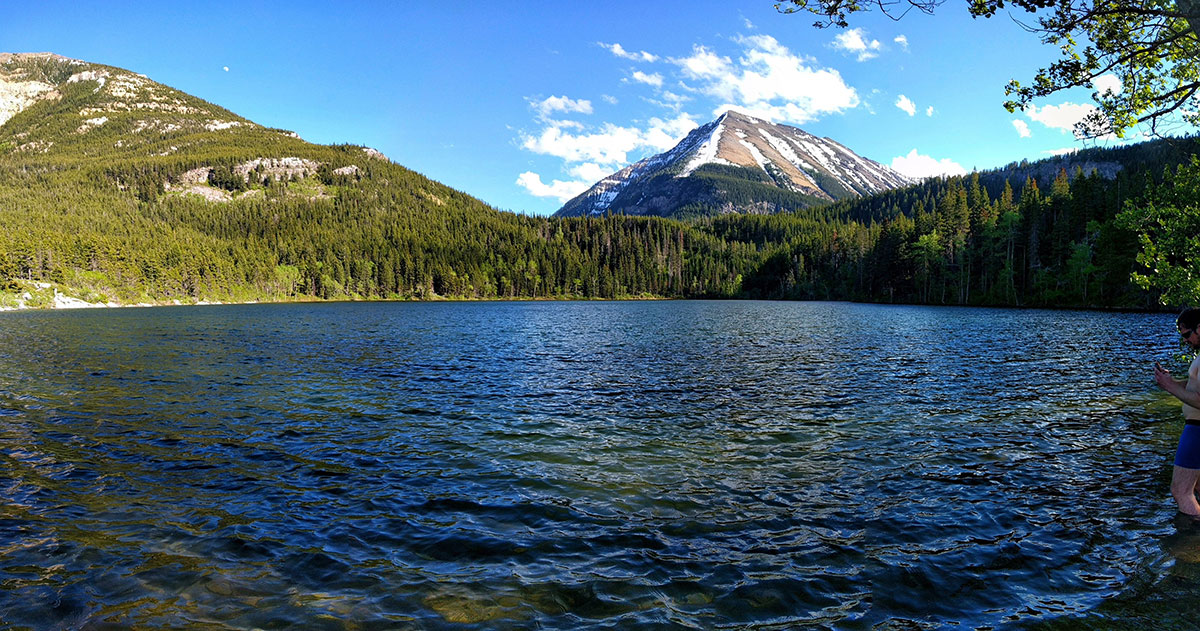
Fishing Regulations
The fishing regulations put out by the Alberta Government ensure sustainability of fishing in our province, so please check and follow the regulations for the body of water you’re at, each and every time before you go fishing. The fishing regulations tell you how many fish you can catch, what kind of bait is allowed, and if the body of water is even open for fishing. Every year the regulations are updated and catch limits and rules change so it’s important to make sure the information you’re relying on is current. There is no excuse for ignorance of these rules and not following them can land you a poaching charge.
Every zone is different. Every lake, river, reservoir and stream have different rules – please check the regulations before dropping a line in the water.
- Alberta guide to sportfishing regulations
- Alberta Sportfishing Regulations 2020 (PDF, 28.9 MB)
- http://www.albertaregulations.ca/fishingregs
Fishing Zones In Alberta
In Alberta there are 10 fishing zones, each with their own rules and catch limits for bodies of water. If you find a body of water to fish in that isn’t listed in the regulations, each zone will have general limits that apply to them. For example Barrier Lake is not listed in the ES1 regulations so you’ll need to refer to the specific ES1 zone rules, which say you can catch and keep up to 5 Trout (July, 2020).
| ES1 | ES2 | ES3 | ES4 |
| PP1 | PP2 | ||
| NB1 | NB2 | NB3 | NB4 |
General Fishing Tips
What To Do When You Catch A Fish
Don’t panic! This is supposed to happen! This is why you’re here! Don’t forget to take a photo 🙂
- Start reeling in the fish, letting the line back out if it starts fighting hard
- Adjust the crank as needed, you want the line to be tight but not so tight it breaks
- Tire the fish out, reel it in, let it swim out, reel it in again and repeat until it stops fighting hard
- If you have a net, net the fish and lift it out of the water
- If you don’t have a net, grab hold of the fishing line just above the hook and pick up the fish using your other hand
- Sometimes you can use your fingers to quickly and easily remove the hook
- Use plyers or a hook remover tool to manipulate and remove the hook(s)
- One hand on the tail, the other supporting the fish from under it’s belly, gently place it back into the water, if you can
Don’t worry if everything doesn’t go according to plan, just do your best to get the fish back into the water safely so it can continue growing and being a fish for future generations to enjoy. That is, unless you’re keeping the fish. All of the same tips still apply, maybe just put it into a live well or cooler instead rather than back into the water.
Fishing From A Boat Or Dock
Being able to drop your line into the water underneath you always makes for a better fishing experience. If you’re using bait, try to place it in an area where the fish might be hanging out, like 3-4 feet off the bottom. Fish can’t really look down as well as they can look up, so keep that in mind when dangling and bobbing up and down. If ever possible I’ll fish from a dock.
Boats will also give you access to parts of lakes that otherwise you wouldn’t be able to even get close to. More spots, deeper depths, plus you can troll (pull a lure behind your boat as you move around), having a boat is a fishing game changer. It’ll also give you access to tools like fish finders.
Fishing From The Shore
Boats are great but they aren’t possible to take everywhere, especially in small mountain creeks, rivers, or places you can only access by foot. Some bodies of water don’t allow boats at all.
When fishing from shore, try to look for deeper pools of water to cast into. Deeper pools with a little water current going by. You’ll be less likely to snag and will hopefully find fish resting in the calmer waters. Also look for areas to fish near that have trees or structures overhanging the water, fish typically use those things for a feeling of safety from predator birds. Also, give yourself plenty of room on all sides so you don’t catch a tree or another person when casting.
Tips
- Picture the water in segments and fish each one a few times before moving to the next
- Search Google for a depth map of the water you’re fishing in case there’s an inlet or deep section you can access
- Don’t throw things into the water or make excessive noise that might frighten nearby fish away
- Try to pack light and only bring what you’ll use as you move up and down the shoreline
- Bring sunscreen, beef jerky, and extra water
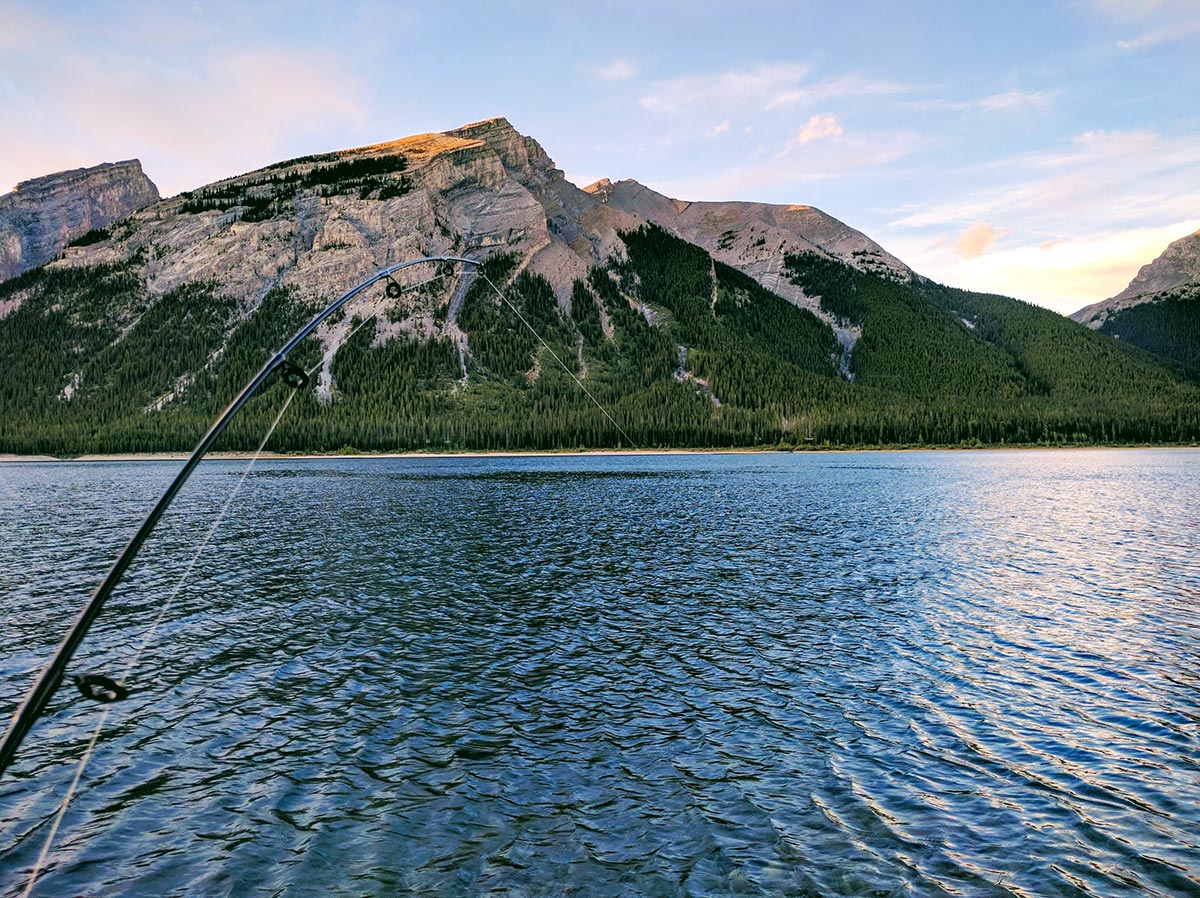
How To Quickly And Humanely Kill A Fish
Quickly, safely and humanely is the name of the game when it comes to dispatching fish you’re going to keep. Don’t let a fish suffer and slowly suffocate to death, it’s not only a cruel thing to do, it’ll change the flavour.
- ‘Bonk’ the fish in the skull with a heavy object, like a rock or log, causing it’s brain to be crushed
- Use a sharp object to poke/stab the fish in the brain, destroying it
Once the fish has been killed, it’s a good idea to bleed them out. Blood left inside a fish will speed up the decay rate and decomposition of the fish.
Pinch The Hook Barbs
- In Alberta you aren’t required by law to pinch the barbs down on hooks but you totally still should! It makes life so much easier when trying to get the hook out, plus it’s way safer for the fish. Simply use a pair of plyers and pinch down the barbs on new tackle. Removing a barbed hook can be quite dangerous or even deadly for the fish, depending on how much you damage it ripping the hook free. Releasing fish safely and unharmed back into the water will help with conservation, and is just something you should do anyway. Respect fish.
Safe Fish Handling Tips
Fish have a coat of slime on the outside of their body which helps them stay healthy in their environment, fighting off bacteria and infections so it’s super important to practice safe handling techniques to increase the chance of survival when it goes back into the water. Always do your best to handle the fish as little as possible when catching/releasing. If you’re going to keep the fish it’s still good form to handle the fish with respect and care.
- Use a rubberized net to retrieve it from the water
- Wet your hands before handling the fish (dry hands will take the slime off)
- Purchase a pair of fish handling gloves for extra grip and protection of the fish
- Keep the fish in the water while removing the hook, if possible – it helps with the slime coat and allows them to oxygen
- Don’t put the fish in dirt, on cement or any other surfaces that will damage the slime coat
- Do not hold a fish up by the gills, they’re very delicate and can be fatally damaged easily
- Lift the fish out of the water by holding it from underneath, with the other hand holding the tail if needed
- Fish breathe by passing water through their gills and taking in the oxygen, please do not keep them out of water for too long
- Release the fish gently into the water, don’t just throw it in >:(
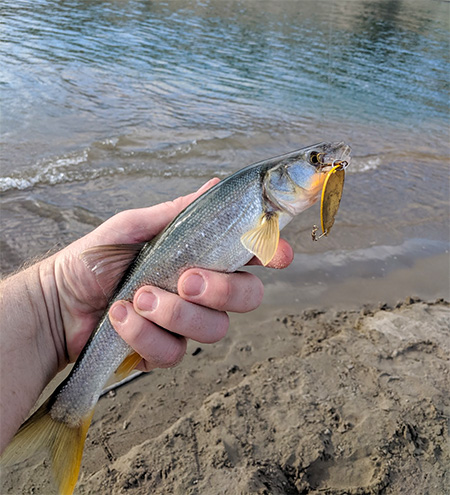
Other Fishing Alberta Resources
- r/FishingAlberta on reddit
- My guide to Ice Fishing in Alberta
- My guide to Fishing Around Calgary
- Outdoorsmenforum.ca Fishing Forum
Conclusion
There is a lot of information in this guide and I hope it’s been helpful in some way to at least one person. This guide will continue to be updated over time. Please drop any comments you have down below.
Thanks!
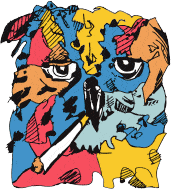
Blogging in Calgary.
Follow along on Facebook, Instagram, Twitter. Join the Calgary Discord Server!











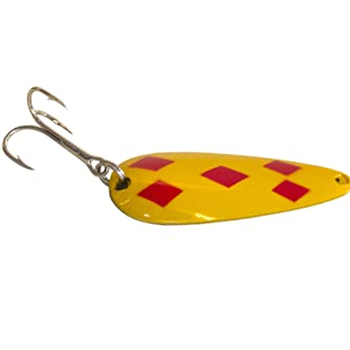




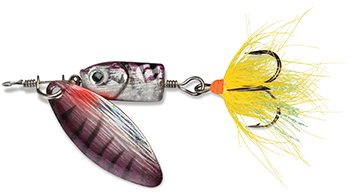

Great information here. I believe you just taught the man how to fish. He Shall never go hungry…or bored again.